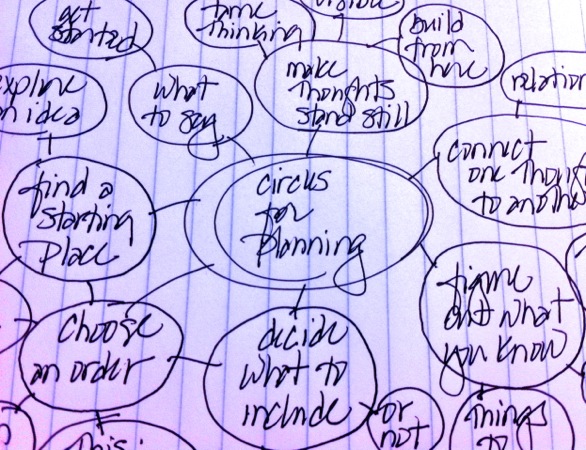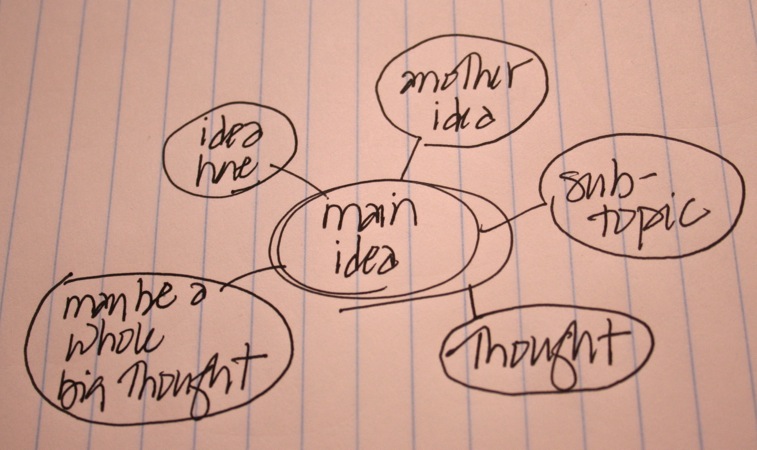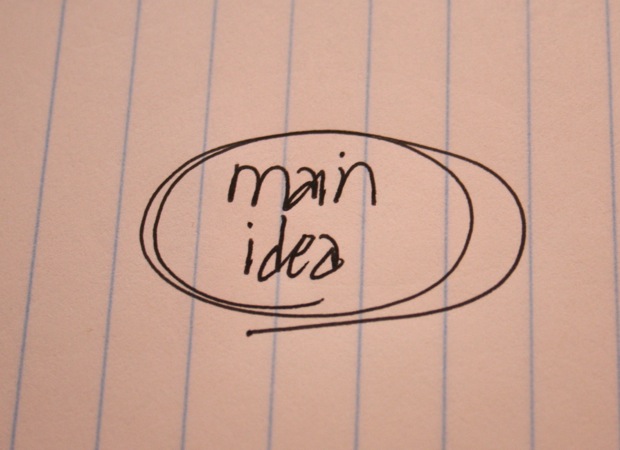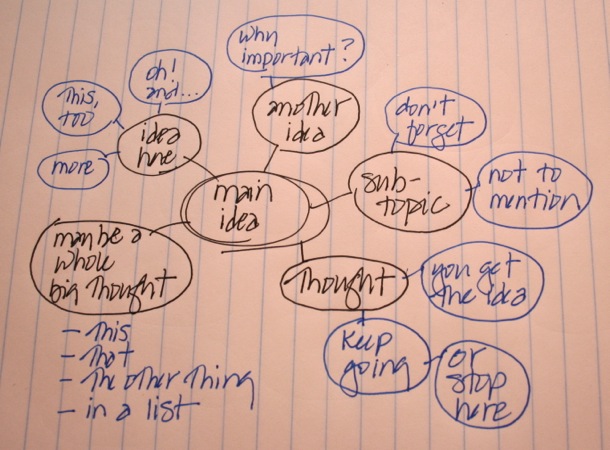If you’re like me, you sometimes have a big jumble of thoughts that you want to organize into a coherent something: maybe a talk, a post, an article, or a plan.

If I’m writing or working on a talk, then I start by drawing a mind map. For me, this safely bridges that frightening territory between a blank piece of paper and a formal outline. It’s both easy to start and helpful to follow.
Here are the basic steps for making thoughts stand still so that it’s easier to work with them:
- Main Idea. Start with a key word or phrase that describes your topic. Write it in the middle of a blank page & draw a circle around it.
- Other Key Topics. In the space around that first circle, write important words and phrases that are related to your main idea. Circle each word or phrase. Draw connecting lines between circles to show relationships.

- Related Thoughts. For each key topic, write words that describe it. Circle these and connect them to their key topics (and sometimes to each other or another key topic). This can get a little messy. That’s okay.
- Repeat as Needed. Sometimes you’ll fill a whole page, or you might have enough detail in just a few circles. You may find that one of your key topics grows so big that you’ll want to start with a fresh piece of paper and give it a map of its own.
Note: At no point during this process should you worry about how beautiful your mind map is or whether you have just the right words. The point is to capture your thoughts: what you know already about the topic & want to share.
Once you’re done, highlight the areas you want to use, number them, use them to create a more formal outline, or just start writing.
There may be some thoughts that don’t contribute to what you’re working on right now. Just ignore those, or save them for a later project.
Use mind maps any time to capture your thoughts and then build on them. Mind maps are great for writing, speaking, instructional design, process mapping, studying, journaling, decision-making, product launches, business start-up planning, or inspiring the next phase of your life.
Your mind maps will help you get started, uncover and build on your thoughts, and organize your thinking to make it easier to share in written or oral form.
Resources
Here’s the book that started many people down this path. Tony Buzan uses a tree-like structure instead of circles. The Mind Map Book: How to Use Radiant Thinking to Maximize Your Brain’s Untapped Potential, by Tony Buzan
An update: Modern Mind Mapping for Smarter Thinking, by Tony Buzan, Chris Griffiths, and James Harrison
Question
What do you like to organize your thoughts?


